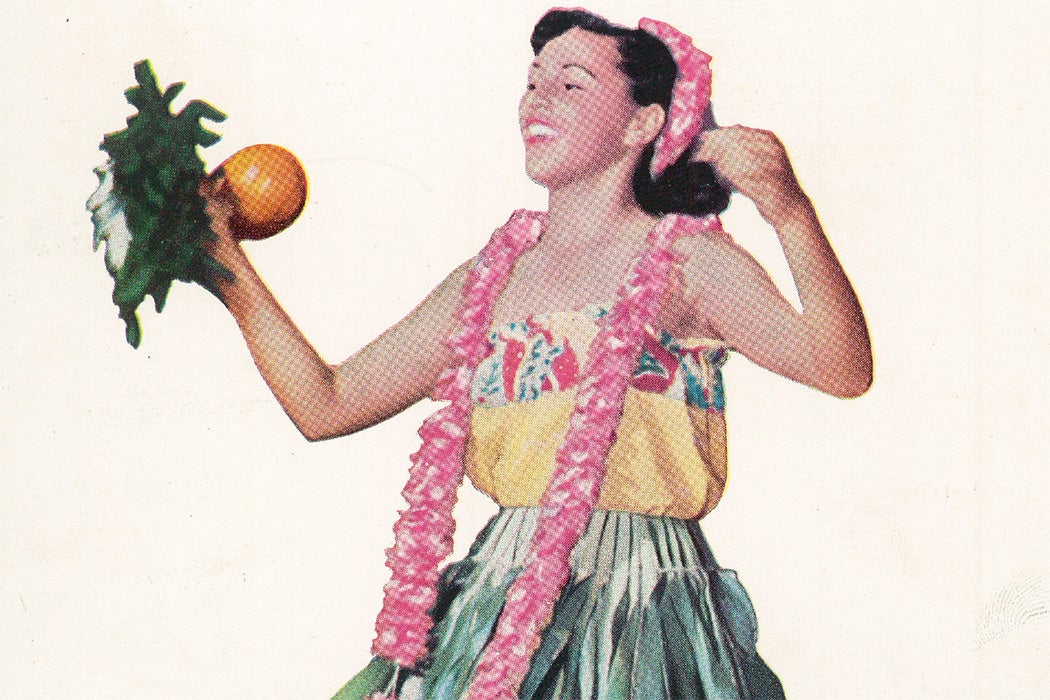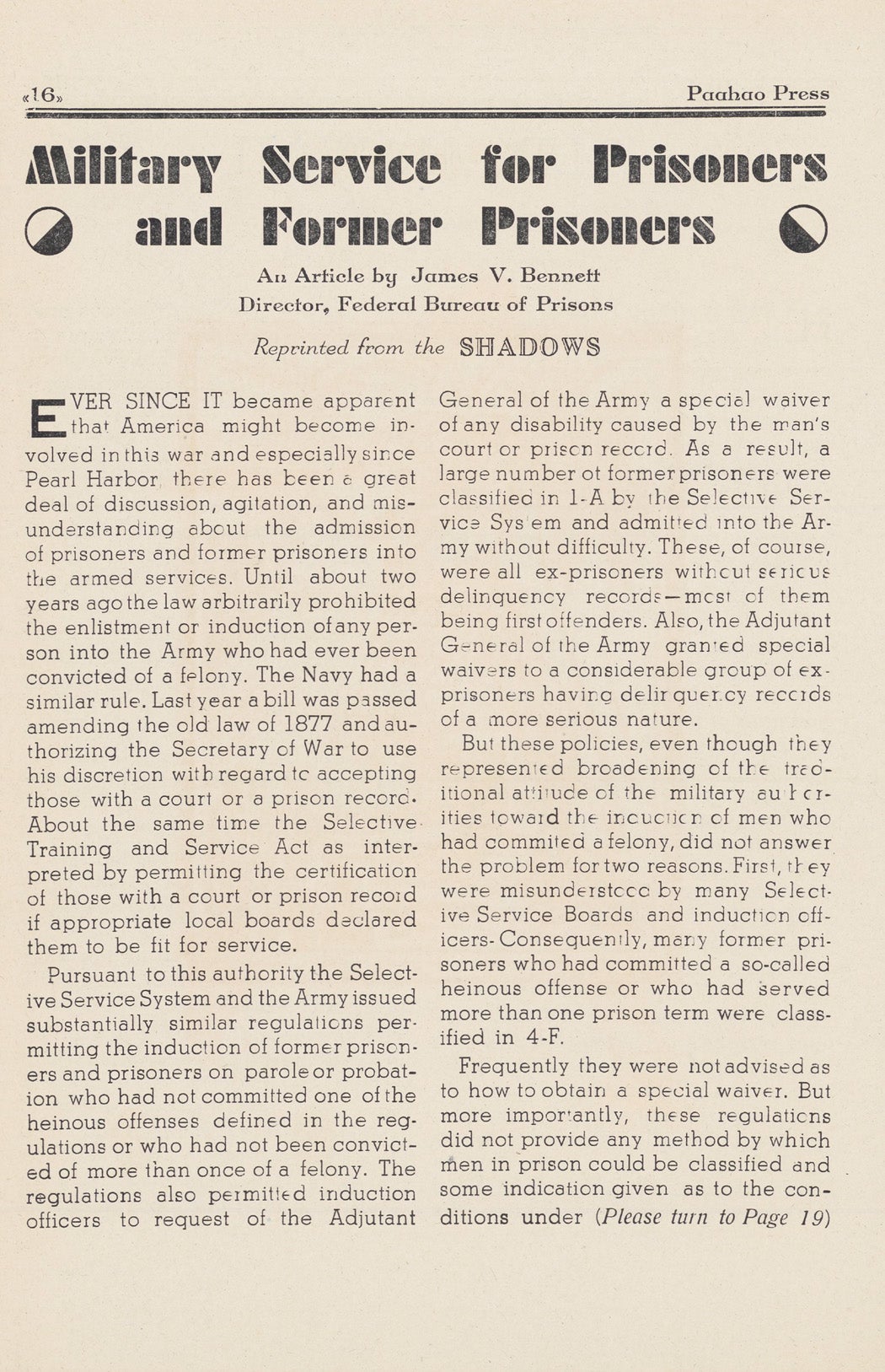Reveal Digitial’s American Prison Newspapers collection has five newspapers from Hawaii, including two from women’s prisons, spanning from 1938 to 2013. Within them are rich accounts of not only Hawaiian history, but American history as well. They cover events from Pearl Harbor to World War II, from the prisoners’ rights movement of the 1970s to the exploding prison populations of the 1980s, and include searing creative writing from the 2000s. Boundless humanity, invaluable history, and the elevation of Hawaiian language and culture are found throughout the thousands of pages.
The titles are:
Paahao Press, 1938–1972, 194 issues
Pineapple Times, 1972–1978, 19 issues
Halawa Bulletin, 1989–1991, four issues
Wahine Times, 1985–1993, a women’s publication, 24 issues
Hulihia, 2005–2013, a women’s publication, eight issues
The prison newspapers of Hawaii predate its statehood, even. The earliest issues of the Paahao Press—Pa’ahao being Hawaiian for prisoner—were produced from the Oahu territorial prison. Its earliest issues contain all the familiar trappings of prison journalism, from sports to religion and music, despite being written 85 years ago. Produced monthly, the issues were often almost 60 pages long and high quality, probably due to having adequate resources and support.
Weekly Newsletter
The World War Two era issues of the Paahao Press are especially unique and rich in history. Despite the chaos that raged around them, the writers and editors continued publishing high quality issues for the duration of the war, including while under martial law.

In December of 1941, what would have been the annual Christmas issue of the Paahao Press took on a somber tone, announcing the bombing of Pearl Harbor. The discussion of the attack is curt, citing “the Press is under strict censorship for the time being.” The imposition of martial law and the total abdication of civilian governance to military authorities is mentioned only cursorily, “The entire Territory was at once place under martial law…” Civilian functions would remain under strict military control for almost three years, and would hardly be mentioned again until after martial law was substantially rolled back in 1943.
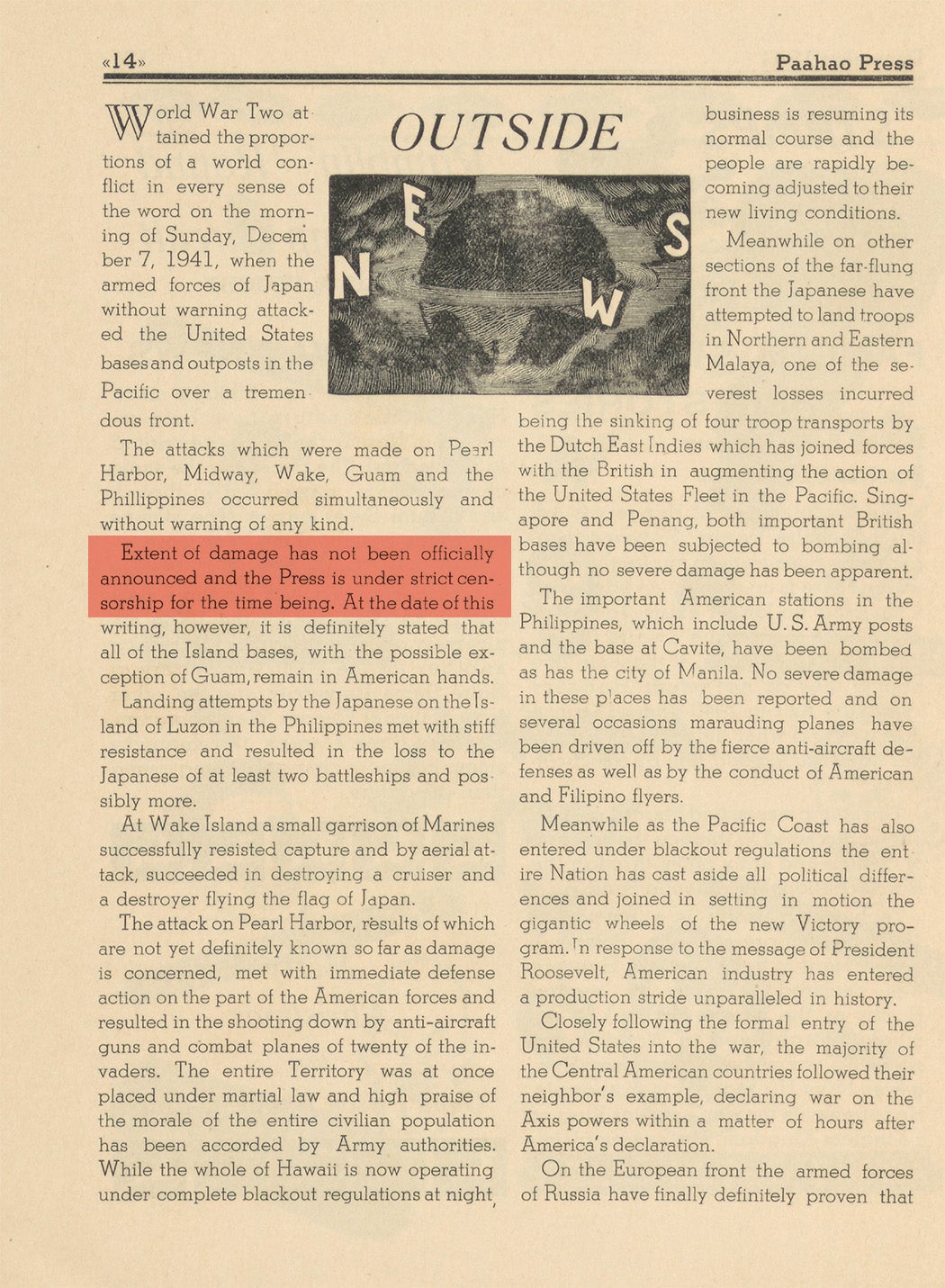
With writ of habeus corpus suspended, anyone could be detained at any time. Local civilian courts, which had enforced the law, were replaced with military tribunals. Military provost courts heard tens of thousands of cases, in trials that happened the same day as the arrest and rarely last more than 20 minutes. In 1942, the Honolulu provost courts had a conviction rate of 99%, with harsh sentences that varied greatly one court to the next, one day to the next.
The first Paahao Press mention of prisoners in Oahu prison that were sentenced under the military courts comes in the July 1942 issue. “Through the cooperation of the Army, men who have entered under sentence of the provost court have been formed into what is known as the Military line and they work under the Army’s own guards. Such work as additional bomb shelters and that construction work that is required by our forces is the lot of these men.” (In the article’s title, O.P. stands for Oahu prison.)
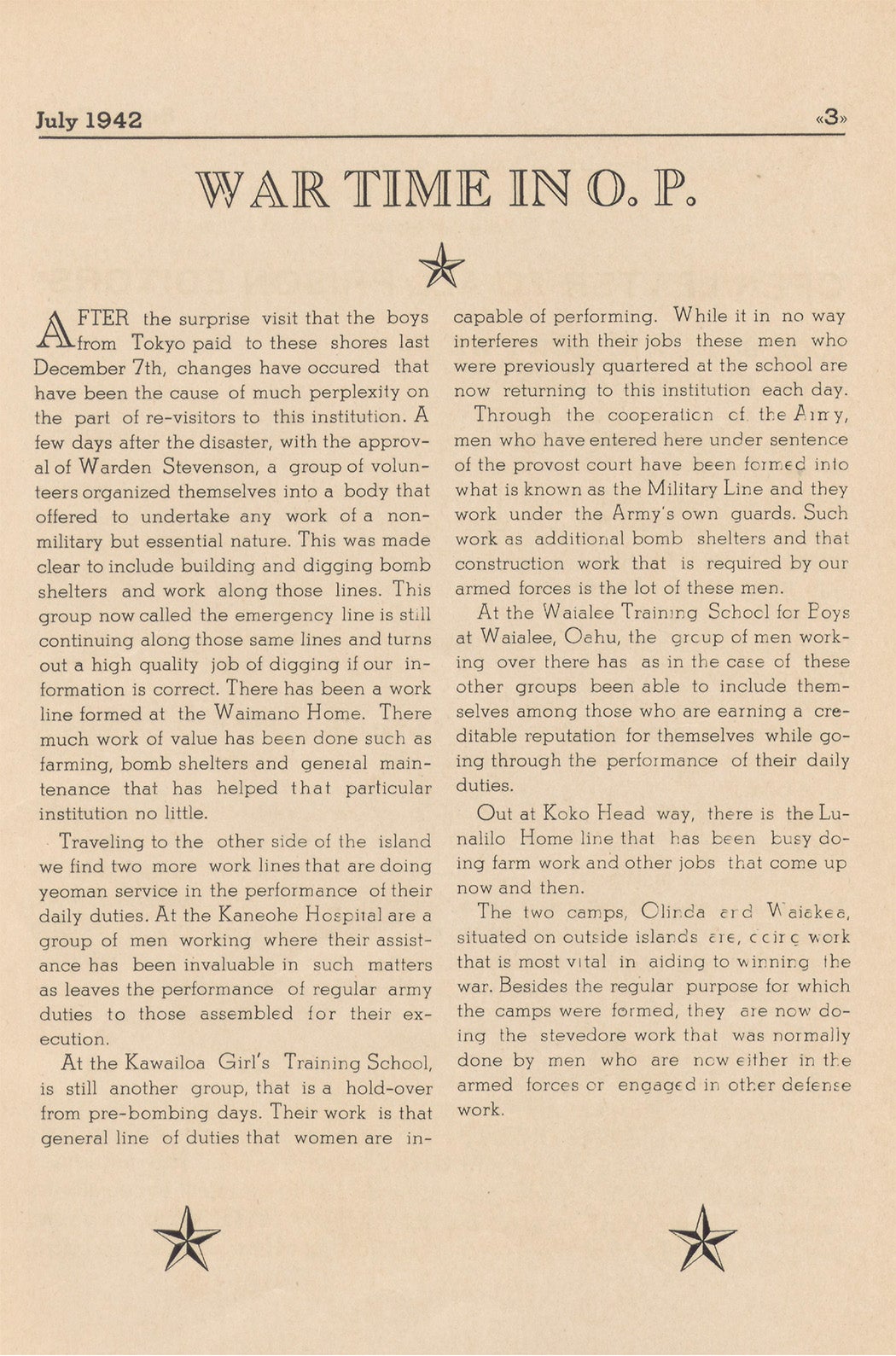
The provost courts imposed sentences not only of incarceration and fines—fines that could be paid off by working for the county at a value of $2 per day—but also mandated blood donations and the purchasing of war bonds. A pint of blood was equal to 15 days in prison or $30 in fines.
The territory of Hawaii was exceedingly racially diverse, in part due to waves of immigration for laborers to work the plantations. In 1940, no racial group composed a majority, but the largest minority was that of the Japanese. Unlike on the mainland, people of Japanese descent and/or nationality were not universally interned, as Thos. Sumida mentions with gratitude in his 1943 essay, “What Democracy Means to Me,” for the Paahao Press. The essay alternates between racial self-deprecation and high praise for the United States, its democracy, and even praise for the fact not all Japanese in Hawaii had been interned, unlike on the West Coast. His essay, which is worth being read in its entirety, is a poignant example of the complicated position at least one Japanese American was forced to adopt.
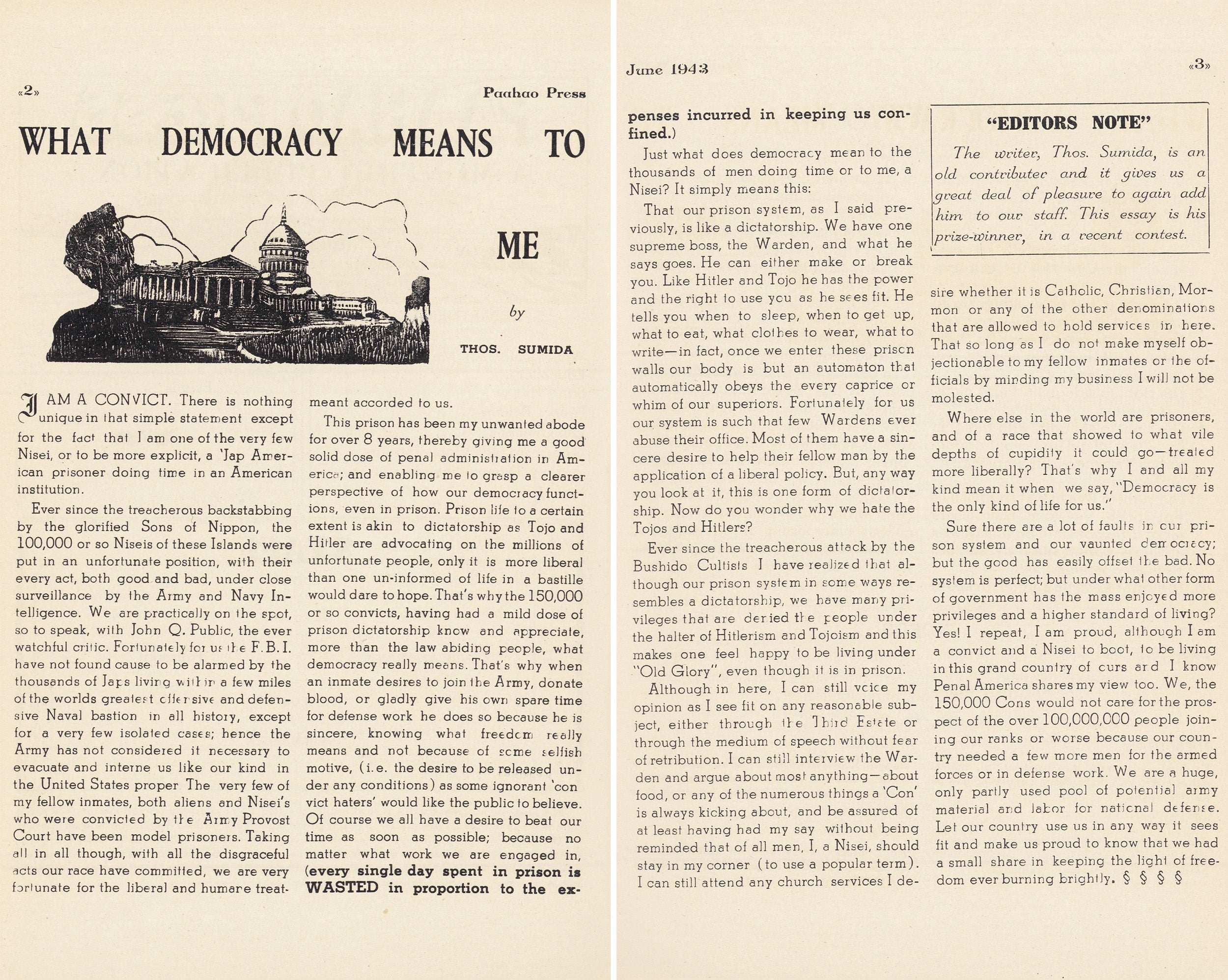
The fact that Hawaii’s 160,000 people of Japanese descent and/or nationality were not interned was more about practicality than ethics. The wartime economy had intense labor demands, and removing a third of the island’s workforce would have been detrimental to the war effort. (Around 2,000 Japanese were interned in Hawaii by the end of the war.) General Delos Emmons, the territorial military governor and Hawaiian theater commander, used Hawaii’s racial diversity and large Japanese population as a justification for continuing martial law, saying, “The racially mixed population necessitated complete military control.” Despite the prison’s diversity, anti-Japanese sentiment is expressed by many racist cartoons seen throughout the World War 2-era issues of the magazine.
Peppered throughout the Paahao Press during war time are editorials with prisoners desiring to contribute to the war effort. Many people, including Thos. Sumida whose essay is printed above, wanted to join the military. They felt impotent sitting in their prison cell as war raged and democracy itself was threatened. Having tasted life under an authoritarian dictatorship via imprisonment, incarcerated people were viscerally aware of its danger and the value of liberty, opined Sumida.
The law that categorically excluded anyone with a felony conviction from joining the Armed Forces was changed in 1940, leading to great confusion among people in prison and those with prior felonies about their eligibility to serve. The director of the Federal Bureau of Prisons, James V. Bennett, published an explainer clarifying the policy and acknowledging ongoing challenges in implementation, responding to widespread demand by people in prison to fight in the war.
In David Dressler’s article Men on Parole as Soldiers in World War II, it’s clear that the changes did, in fact, lead to the enlistment of thousands of people with criminal records, including some who may have been granted parole specifically to join.
In 1943, it appears the prison mandated that all prisoners speak English, mirroring similar campaigns across the island that targeted people of Japanese descent. Perhaps reflecting the demographics at the time, the notice was translated into Hawaiian, Filipino (sic), Spanish, and Japanese. The second bullet point reassures everyone, “Learning to talk in English requires very little time and effort.” It is doubtful the non-English speaking population agreed.

The racial and linguistic diversity of the prison continued to be a topic of discussion, with a 1955 editorial jesting about the lack of education and limited vocabulary among the paper’s writers. “Unlike the rest of the 48 states, Hawaii’s language is a mixture of English, Chinese, Japanese, Hawaiian, Portuguese, Korean, Filipino, Samoan, and a score of others. No can, pau, no like, mauka, makai, are just as vital to us here in the Islands as any other American word.”
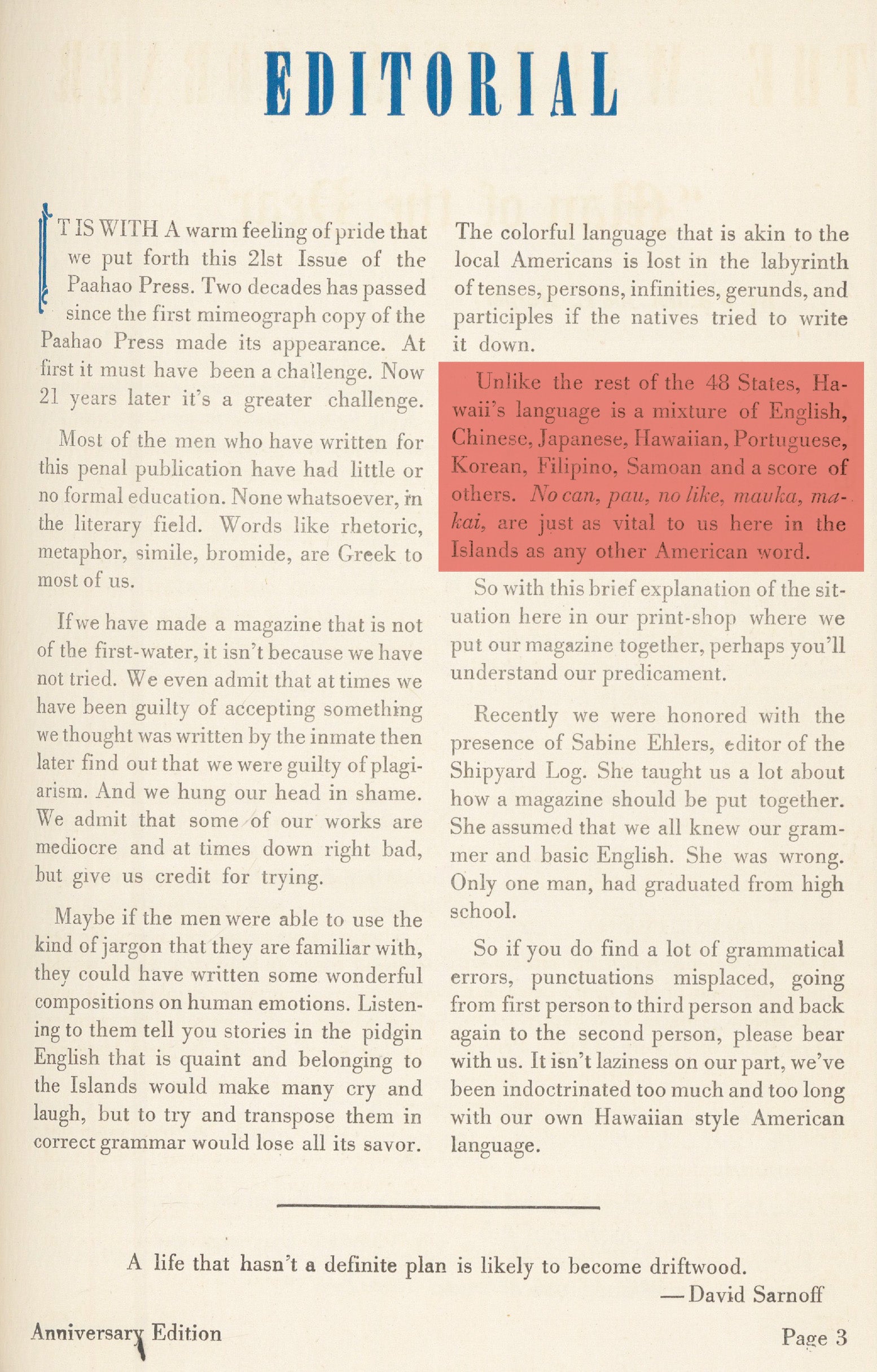
In June of 1943, there were 123 provost court prisoners housed within the Oahu prison, sentenced not by a judge and jury of their peers, but by a military tribunal. The Paahao Press was mostly silent on martial law until 1943, when it was substantially rolled back and perhaps more press freedom was granted. Martial law wasn’t officially terminated until October 1944. “Never before in American history had citizens been subject to military rule for so prolonged a period,” writes Fred L. Israel in Military Justice in Hawaii 1941-1944.
In a piece titled Hawaii’s Work in Wartime, in full above, Ernest May was finally free to write about the military regime the Island had been living under:
People, having become accustomed to the authoritarian principle, in their present prosperity will become apathetic to their traditional right to “a government of laws, rather than a government of men.” … “It is felt that this military regime in a civilian community has been carried long beyond the actual military necessity for it.”
Many articles are dedicated to Hawaiian legends, mythology, history, and cultural practices. With statehood on the horizon, the Paahao Press dedicated the cover of its July 1950 issue to the matter. Dwight D. Eisenhower signed the bill admitting Hawaii as a state in 1959.
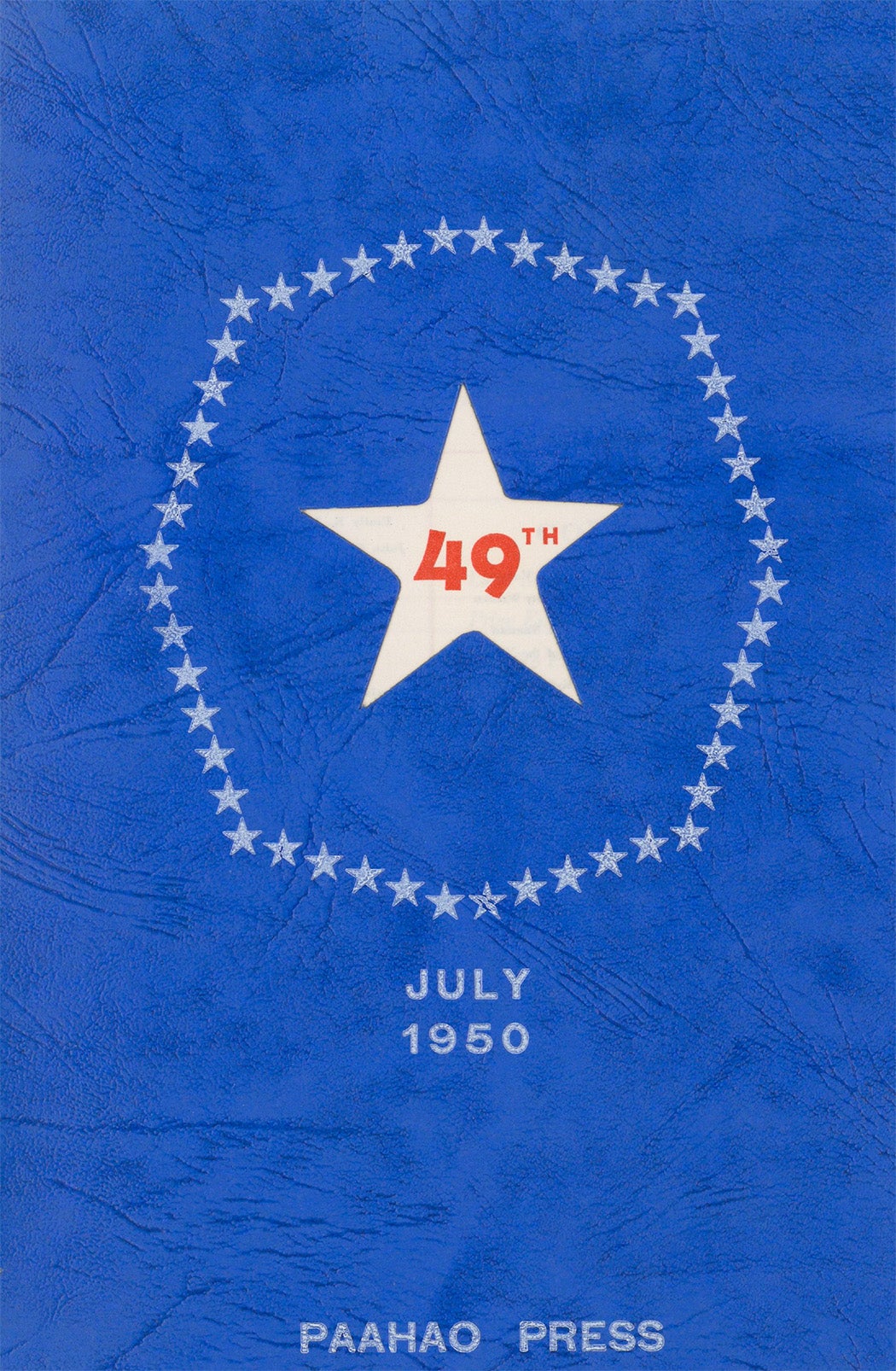
Printing technology advanced through the decades, with the 1960s issues beginning to include rich photographs of life inside, including a visiting hula troupe and a glimpse into the prison’s working life.

It seems the paper shuttered sometime around 1964, and was reignited under the same name in 1972, with a distinct editorial feel. The Paahao Press was a reflection of the 1970s prisoners’ rights movement, a time of great tension in American prisons, with uprisings and riots becoming common place.
A scathing critique of the Hawaii Correctional Master Plan is found in the June 1972 issue. Hawaii was proposing to restructure its prisons and build more facilities. Echoing modern concerns over cash bail in a piece titled “Crime of Bail,” the writer is fundraising for a bail fund to “free our people.” Thirty years after a piece about joining the military ran in the same paper, by 1973 the Paahao Press is lauding activist Walter Collins for resisting the draft.
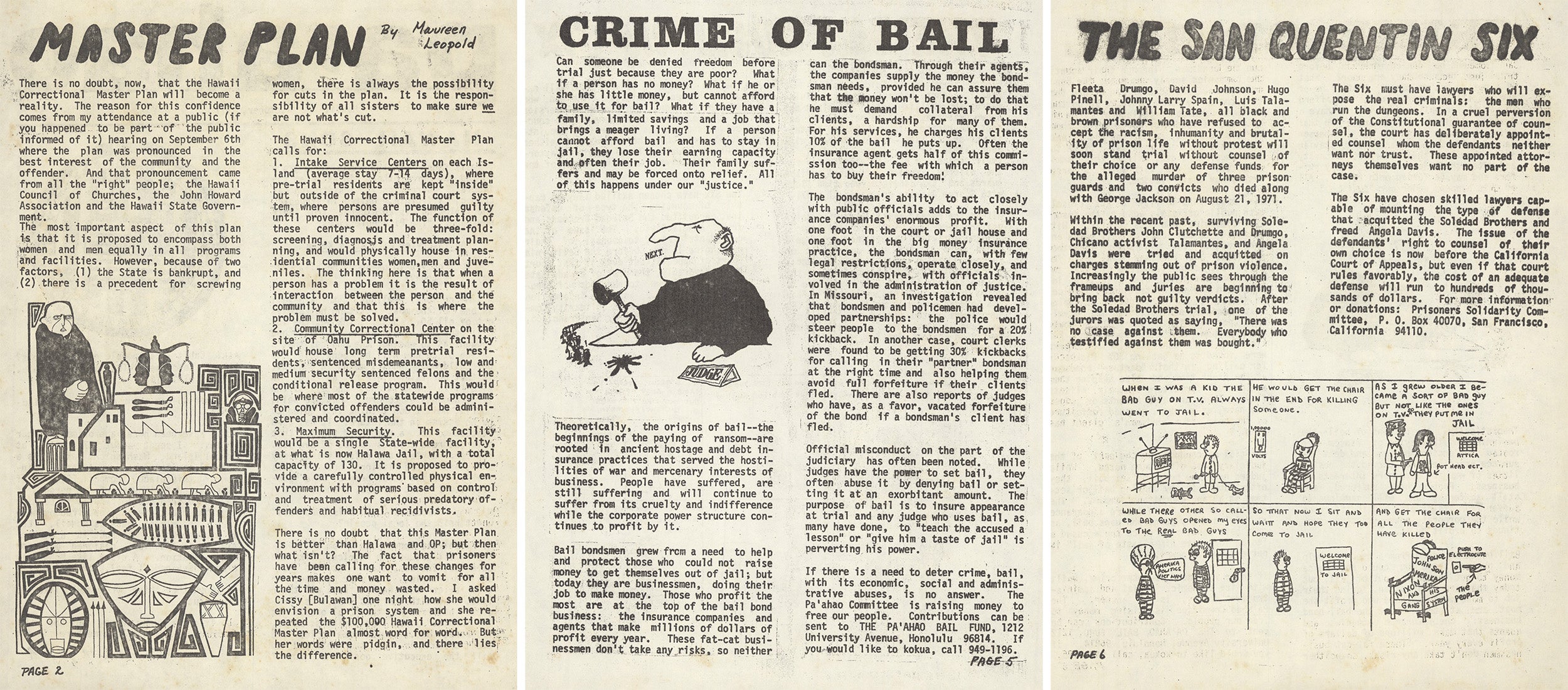
Another Hawaiian prison newspaper is The Pineapple Times, was actually produced on the mainland by “our brothers in exile at the federal correctional institution at Lompoc, California,” according to the Paahao Press. With hand-drawn illustrations and a scrappy feel, Hawaiians sentenced to federal prison and others who grouped themselves with the Hawaiians published in its pages. In their January 1973 issue, the writers painstakingly went through the geography of the Hawaiian islands, listing the most important sites. “Only wild goats and sheep live now on Kahoolawe, use as a bombing target since 1942,” they write. The island, off the coast of Maui, was “the smallest of the eight major islands of the Hawaiian archipelago and the only one being used as a bombing range,” writes Mansel G. Blackford in Environmental Justice, Native Rights, Tourism, and Opposition to Military Control: The Case of Kaho’olawe. Bombing didn’t cease until 1993. The American Prison Newspapers collection has issues of the Pineapple Times from between 1972 and 1978.
How the California-produced newspaper came to be preserved as a Hawaiian prison newspaper is evidenced in one of the issues, that shows its makers sent it from Lompoc, California to the University of Hawaii. Anne Ray, managing editor of Reveal Digital, explained to JSTOR Daily how these Hawaiian newspapers came to be in the collection. “The University of Hawaii libraries generously loaned us these materials for digitization. Everyone who gets to read these papers is fortunate that U Hawaii libraries took the care to be stewards of these newspapers, which are especially rare. So far from my research, they appear to be the only library that saved them.”
While some state libraries preserved their prison newspapers, that is not always the case. She works with everyone from the papers’ creators to activists and formerly incarcerated people to locate and digitize them. “The newspapers are at true risk of being lost to history. It’s critical that institutions preserve these newspapers when they have them, and that’s especially true in the case of Hawaii. There’s a hunger to teach Hawaiian culture, certainly generally, but those on the inside, being literally imprisoned by a state institution, are even more separated from it. You can see it in this issue of Paahao Press. ‘Our young Hawaiian people should learn the Hawaiian culture. So whoever is reading this and knows our culture, please teach our young people of today.'”
Ray knows there are more prison newspapers in existence than she has identified so far. “It’s turned into a wildly expansive project of bibliography. I hope more people will tell us about more, and with all the resources we can muster, I will try to be sure they’re preserved online.”
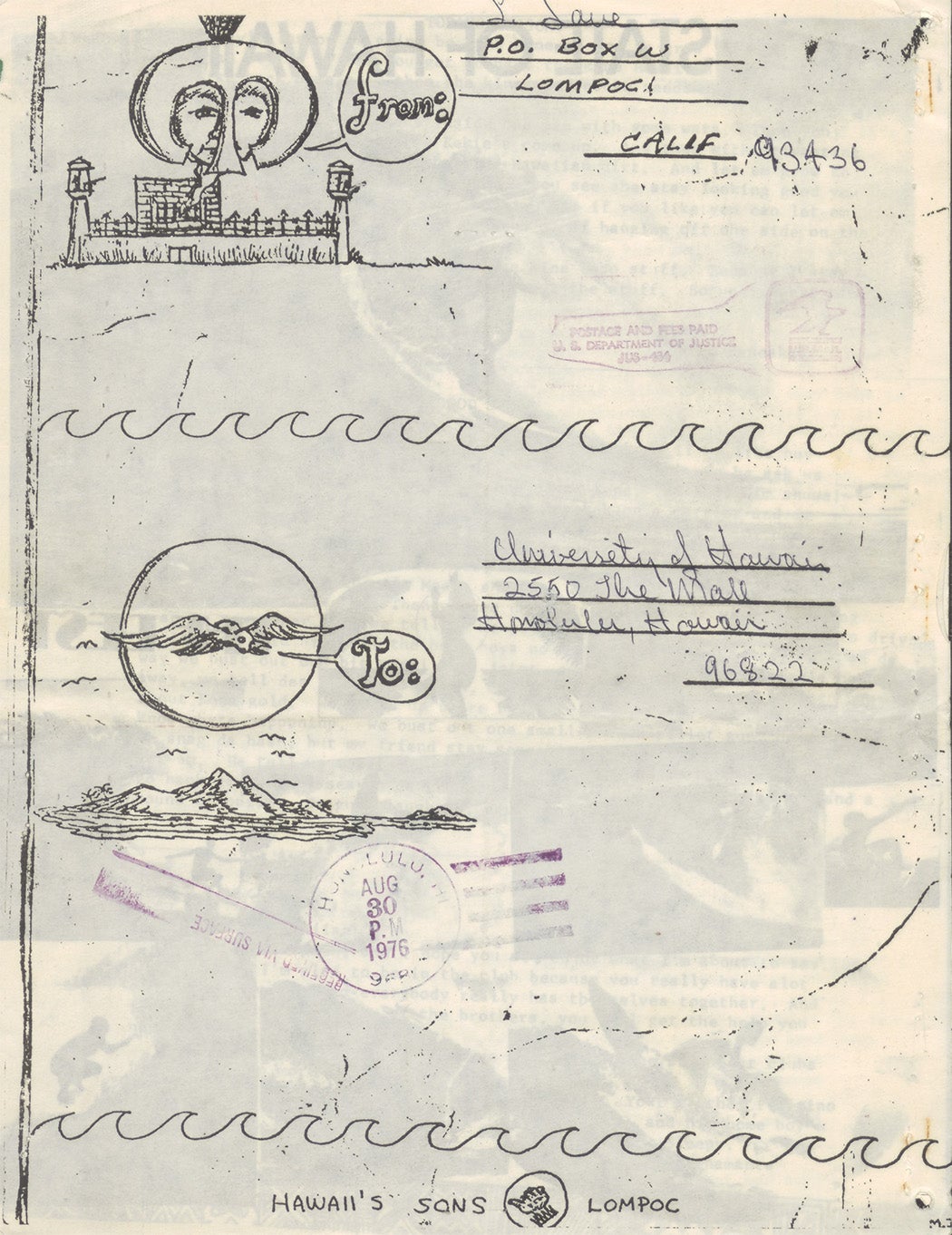
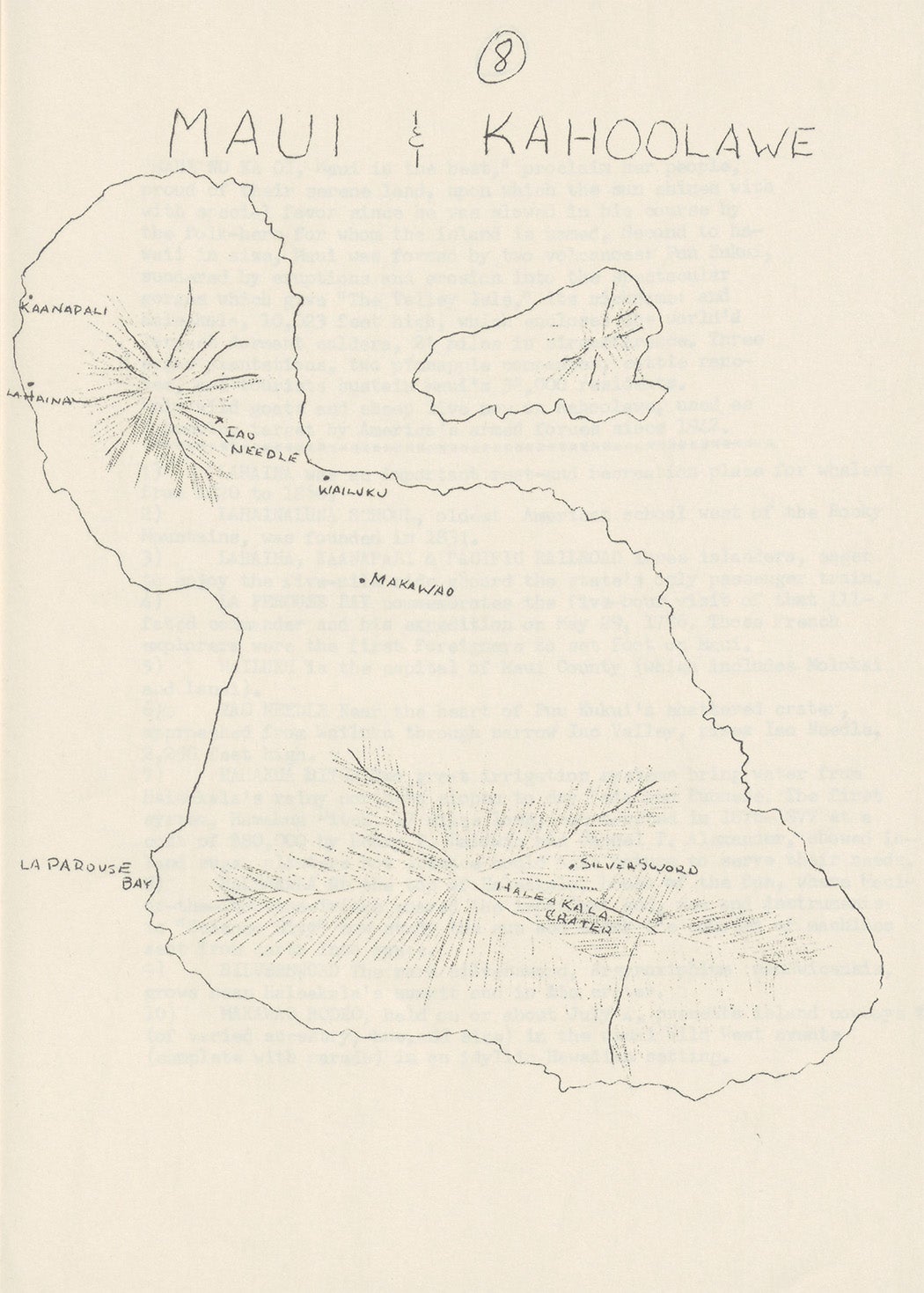
The next Hawaiian newspaper, chronologically, is the Halawa Bulletin, produced at the Halawa Correctional Facility. Well researched and written, the paper was likely well resourced. Its articles include deep dives into the history of penology, polygraphs as junk science, advertisements for an interest-bearing savings account available to prisoners, and quotes from then-Supreme Court Chief Justice Warren Burger who was a fierce critic of the prison system.
“It is predictable that a person confined in a penal institution… and then released, still unable to read, write, spell or do simple arithmetic and not trained in any marketable vocational skill, will be vulnerable to returning to a life of crime. What I urge are programs in which the inmate can earn and learn his way to freedom and the opportunity for a new life,” writes Chief Justice Burger. Another Burger critique of prisons is found below under “Society’s Moral Obligation.”
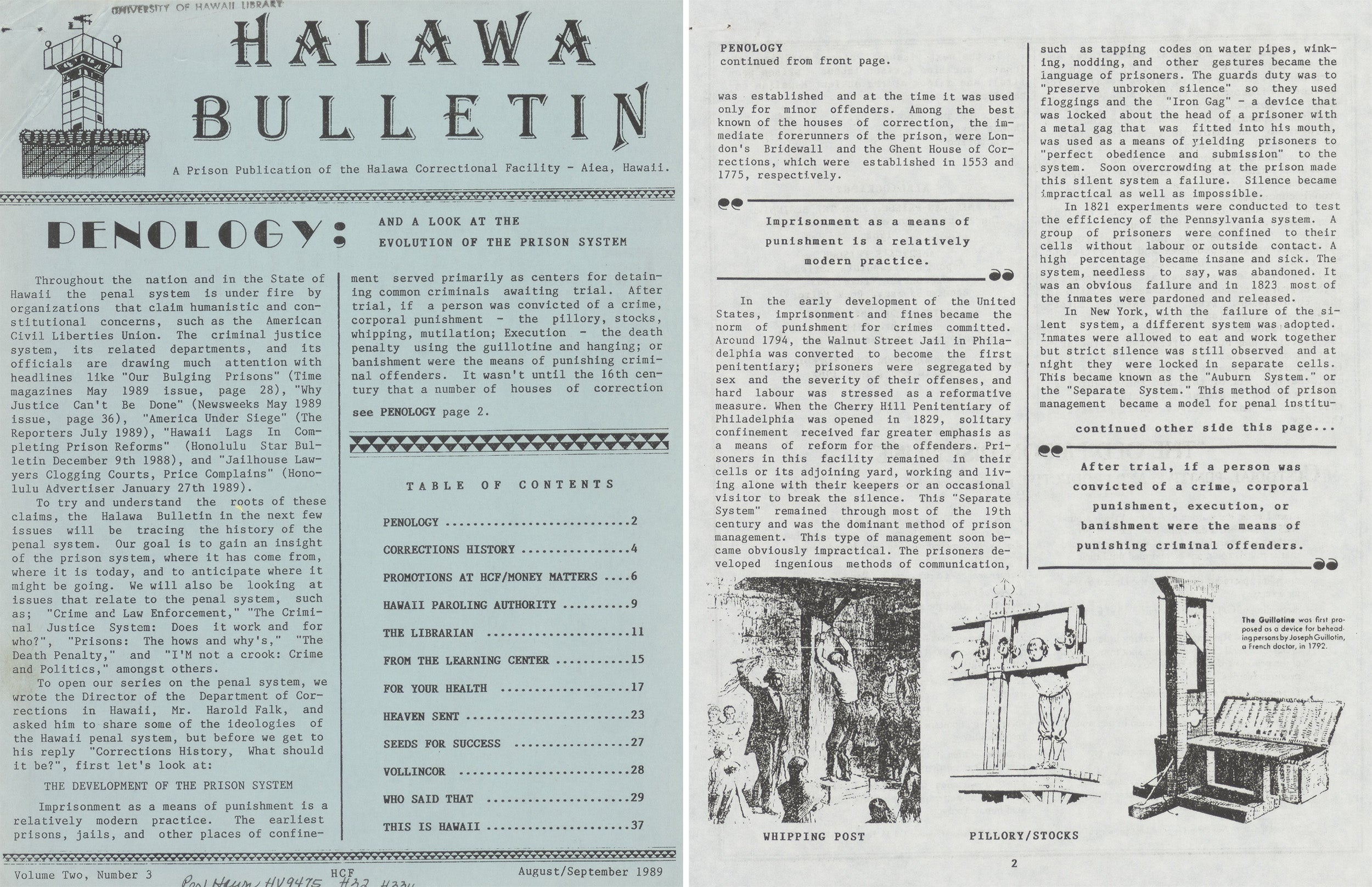
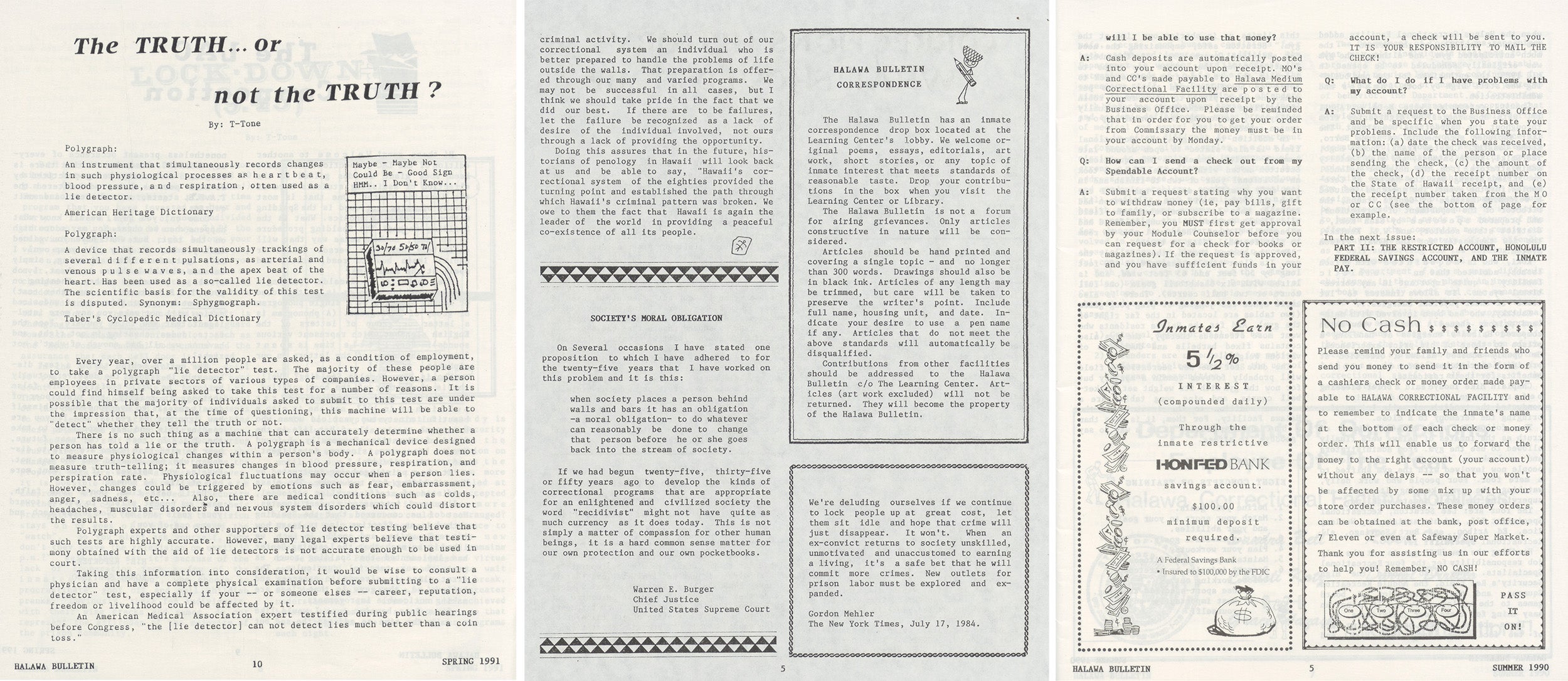
The Hawaiian language is elevated in a recurring segment called “This is Hawaii,” with poetic Hawaiian sayings such as, “Ua ola loko i ke aloha,” which translates to, “Love gives life within.” Other translated and contextualized idioms can be read in the section below. In “Gallery,” the editors showcase the artistic submissions of the detainees. Though only four issues of the Halawa Bulletin are present, from 1989 to 1991, they make for fascinating reads.

The Wahine Times is the first women’s publication, with issues spanning 1985 to 1993. Primarily text based, perhaps reflecting diminished resources when compared to the men’s institutions, the women criticize the lack of good time and conjugal visits.
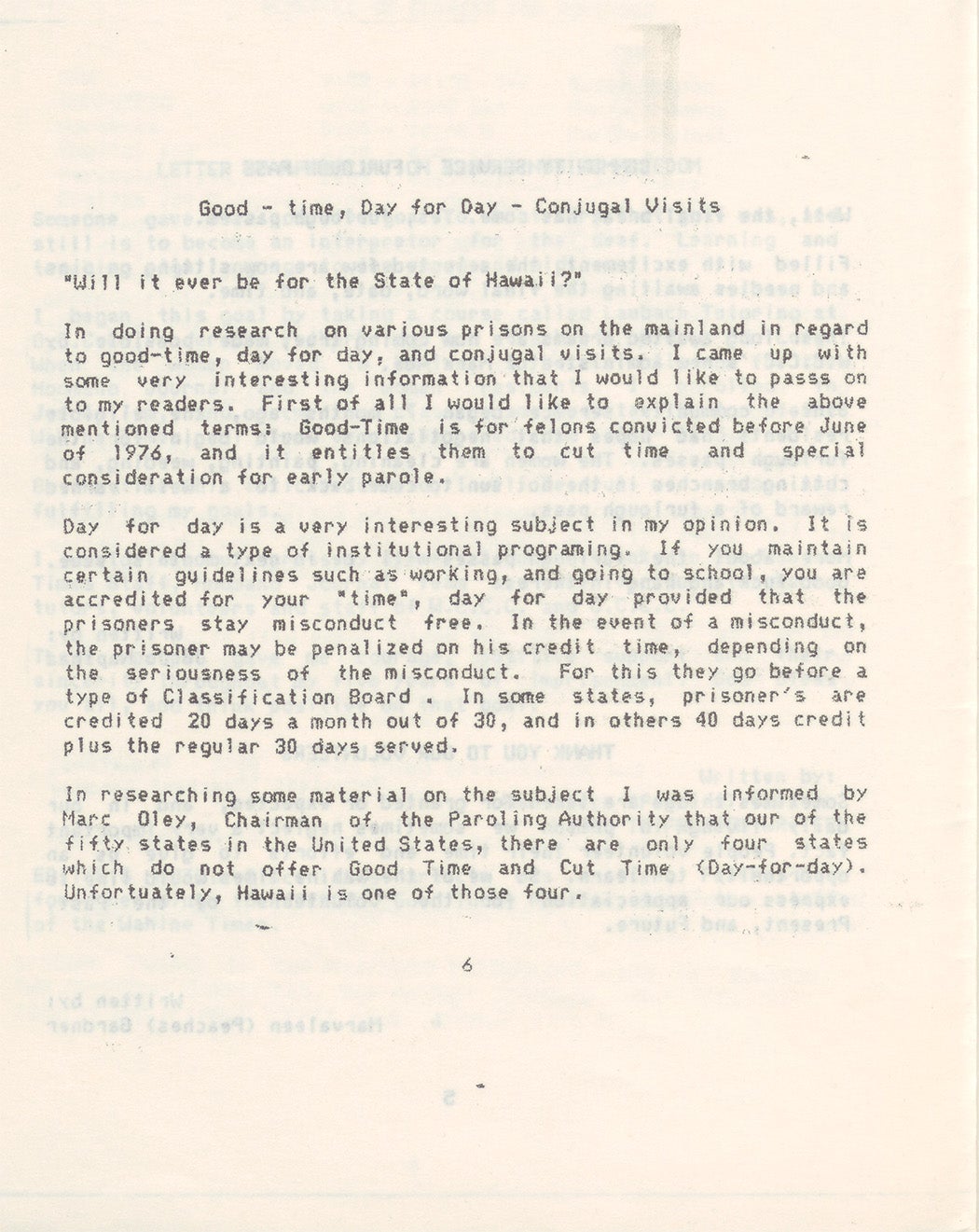
Inspirational quotes are common in prison newspapers, which tend to alternate between displays of hopelessness and attempts at generating hope. The Wahine Times is no exception.
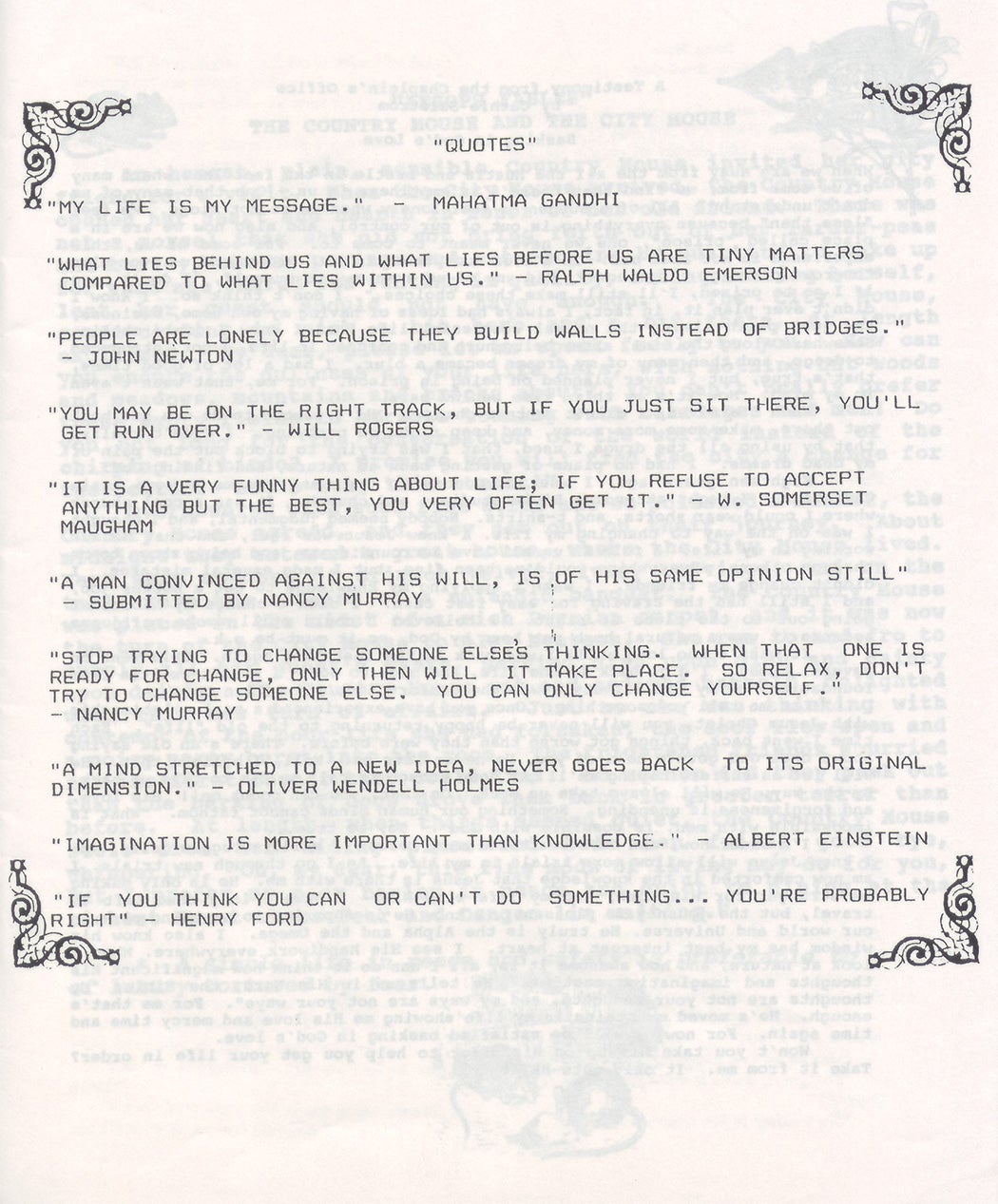
In an interview with the administrator of the prison, Mark Abe, when asked what changes he foresees in the future, he scoffs, “What I really want is a new facility!” Complaining of old plumbing and a lack of space, he mentions the legislature will have to approve funding for a new women’s prison.
By 1995, Hawaii began sending its prisoners to private prisons across the United States to alleviate overcrowding. “Hawaii is one of four states that solve their prison crowding problem by shipping inmates out of state, usually to facilities run by for-profit companies,” reports Eli Hager and Rui Kaneya for The Marshall Project. Hawaii is one of the leading states when it comes to using private prisons, with over a quarter of their correctional population being housed in such facilities, always on the mainland.
Saguaro Correctional Center, in the Arizona desert, is home to hundreds of Hawaiians. It was also the site of a COVID outbreak in 2020, as mentioned in First Amend This!, a publication out of Idaho, a state that also sends its incarcerated people to private prisons in other states, including Arizona. It took lawsuits to force the facilities to allow Native Hawaiian religious practices.
The most recent Hawaiian newspaper in the collection, Hulihia, which means transformation in Hawaiian, began at the Women’s Community Correctional Center, born out of a creative writing class. Its annual issues are actually books, spanning 2005 to 2013. Over time, it expanded to other facilities, including some men and Hawaiian prisoners housed in private prisons on the mainland. It contains searing, heart-wrenching writing, often grouped thematically. Each issue opens with the poem Hulihia by ‘Ilima Stern.
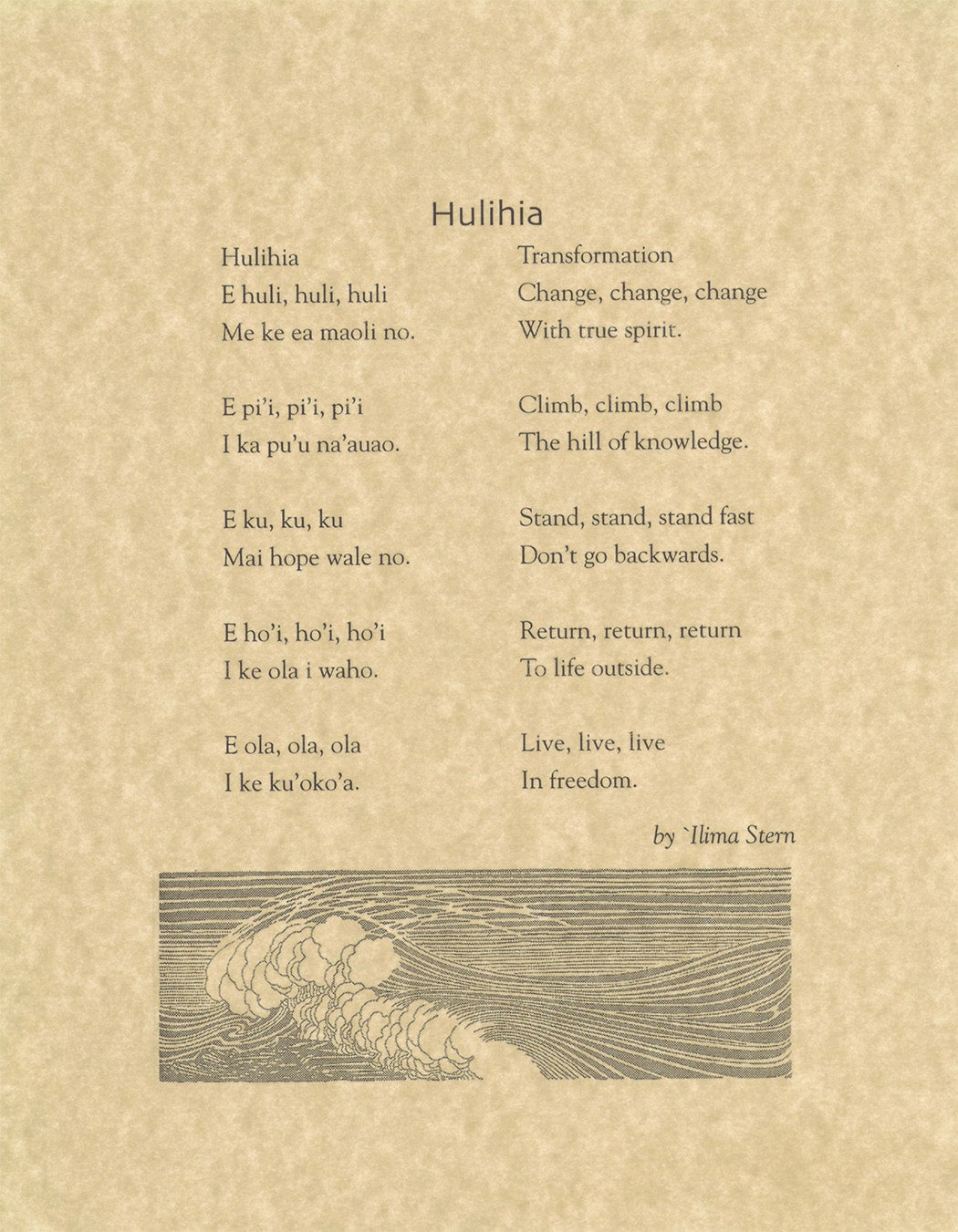
Childhood trauma is a repeated theme, such as this poem titled “My Rage!!” by Lori.
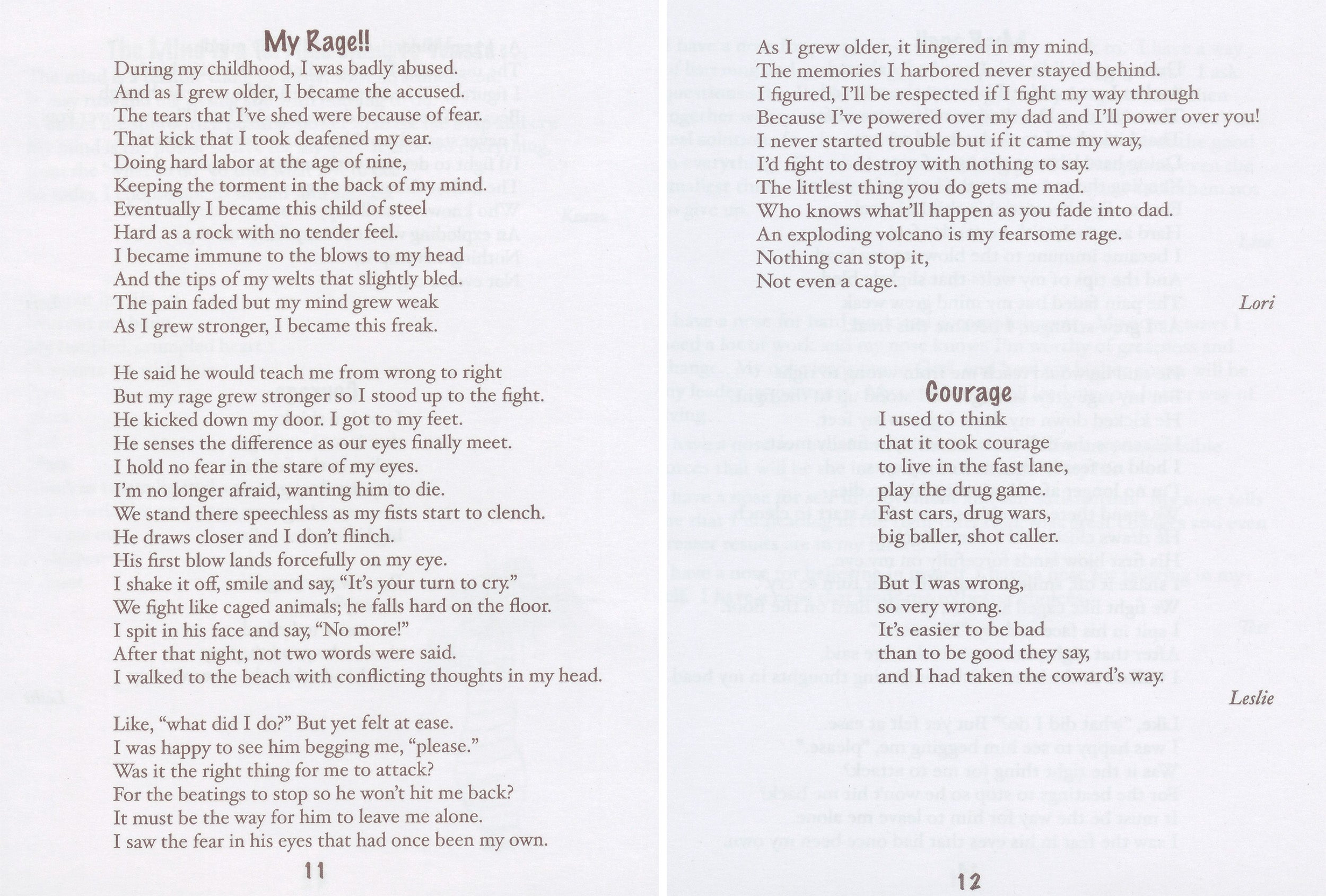
Prison conditions and cramped quarters also make repeated appearances through the pages. “I wonder if there is a shower available. Two showers, forty women—you do the math.”

Juxtaposed against the many women sharing their stories of abuse and trauma, a man named Michael makes a rare confession: he physically abused his wife.

Hulihia’s pages are filled with well-crafted poetry, vulnerable confessions, and creative nonfiction as writers respond to their teacher’s prompts. It is the most recent Hawaiian newspaper within the collection, and the only one to reflect that incarcerated Hawaiians had begun to be transported thousands of miles from home and into private prisons.
These excerpts are a tiny fraction of the valuable material contained within the five newspapers. The American Prison Newspapers collection continues to grow, and as more papers and more states are represented, always available open access, original research becomes increasingly possible. Exploding prison populations uniquely affected Hawaii, where space itself is a precious resource. The “Master Plan” to create new prisons in Hawaii was never fully implemented, and instead the state now relies on sending its incarcerated people to mainland private prisons. The Hawaiian newspapers are also a rare example of the wartime experience through the perspective of people behind bars, nearer to the fighting than most other Americans. In other states and regions, the prison newspapers’ unique angles are different but no less fascinating.
